Home Cardiology and Pulmonology
What is Cardiopulmonary Disease
How it Affects Health | How to Diagnose | How to Use QOCA | Why QOCA
Basic Information
Cardiopulmonary disease encompasses conditions affecting the heart and lungs, including coronary artery disease (CAD), heart failure, chronic obstructive pulmonary disease (COPD), and pulmonary hypertension. Common symptoms include shortness of breath, fatigue, chest pain, and persistent cough. These conditions are often caused by smoking, high blood pressure, obesity, and inactivity.1 Lifestyle changes, medications, and sometimes surgery, along with regular monitoring, are essential for preventing and improving quality of life.2
There are many types of cardiopulmonary diseases, which can be further categorized into cardiovascular diseases and lung diseases. These organs are closely connected, and a problem in one can affect the other.3
Cardiovascular diseases
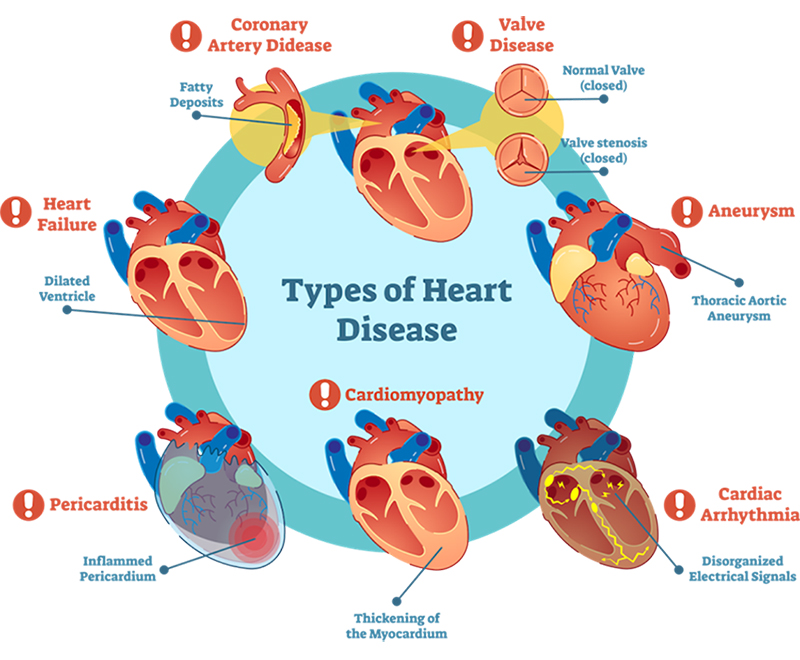
Credit: Retrieved from U.D.M.I.
Coronary Artery Disease (CAD): Narrowing or blockage of the coronary arteries that supply blood to the heart, primarily due to atherosclerosis, occurs when plaque builds up in the artery walls. Coronary artery disease (CAD) can lead to chest pain (angina), heart attacks, and other serious heart problems.4
Valve Disease: It occurs when one or more heart valves malfunction, impacting blood flow. This can involve stenosis (narrowing), regurgitation (leakage), or atresia (blocking).5
Aneurysm: A bulge in a blood vessel wall, often occurring in arteries, caused by weakened vessel walls from factors like high blood pressure or atherosclerosis. It can rupture, leading to severe bleeding. Symptoms vary, and many individuals remain asymptomatic until complications arise.6
Cardiac arrhythmia: An irregular heartbeat that can be rapid (Tachycardia), slow (Bradycardia), or irregular (Atrial Fibrillation). It can result from changes in the heart's electrical system, underlying health conditions, or external factors such as stress and caffeine.7
Cardiomyopathy: A disease of the heart muscle that affects its size, shape, and ability to pump blood. The main types are: 8
- Dilated Cardiomyopathy: Enlarged and weakened heart.
- Hypertrophic Cardiomyopathy: Thickened heart muscle that may obstruct blood flow.
- Restrictive Cardiomyopathy: Rigid heart muscle that limits filling.
- Arrhythmogenic Right Ventricular Cardiomyopathy (ARVC): Replacement of heart muscle with fatty or fibrous tissue in the right ventricle.
Pericarditis: Inflammation of the pericardium, the membrane surrounding the heart. It can cause chest pain that worsens with deep breathing or lying down, along with symptoms like fever, weakness, and a rapid heartbeat.9
Heart failure: A chronic condition in which the heart cannot pump blood efficiently, leading to insufficient blood flow. It can result from coronary artery disease, high blood pressure, or previous heart attacks. Symptoms include shortness of breath, fatigue, fluid retention, and swelling in the legs or abdomen. A healthcare provider can detect early signs of heart failure by listening for abnormal sounds, such as a third heart sound (S3), which may indicate fluid overload or heart dysfunction.10

Credit: kokotewan
Lung Diseases
Lung diseases can be classified into three main subgroups: airway diseases, lung tissue diseases, and lung circulation diseases. The diagram illustrates these categories. It is important to note that many chronic lung conditions involve a combination of these types.11
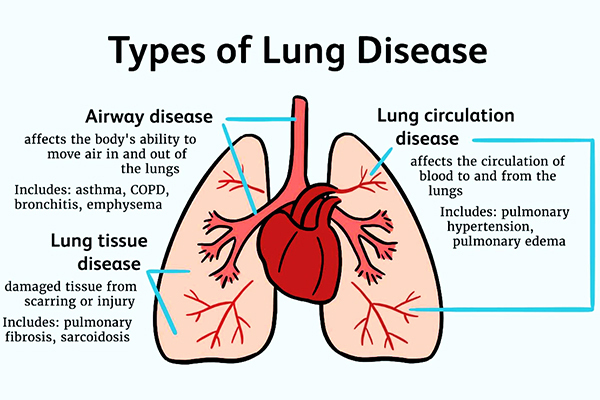
Credit: Hilary Allison/Verywell
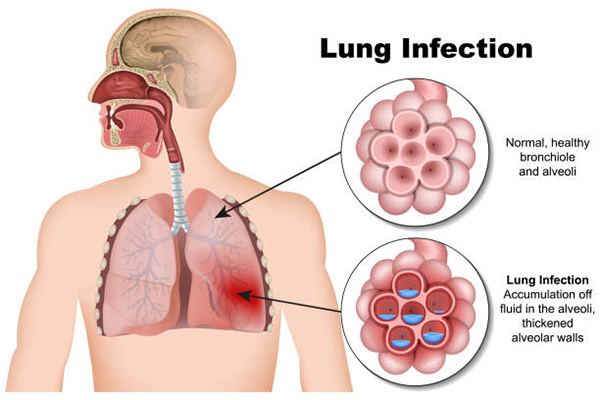
Credit: iStock/NIBIB
Pneumonia: A lung infection that inflames the air sacs in one or both lungs, which may fill with fluid or pus, causing symptoms such as cough, fever, chills, and difficulty breathing. It can result from bacteria, viruses, or fungi and can vary in severity.12
Pneumonia is often diagnosed by evaluating symptoms. During a physical exam, the doctor listens to the lungs with a stethoscope and checks the patient’s pulse and blood pressure. They may also hear crackles or rales in the lungs due to fluid in the air sacs. While a stethoscope cannot confirm the diagnosis, it is crucial for the initial assessment and can guide further testing if needed.12

Credit: Hilary Allison/Verywell
Prevalence: Cardiovascular Disease
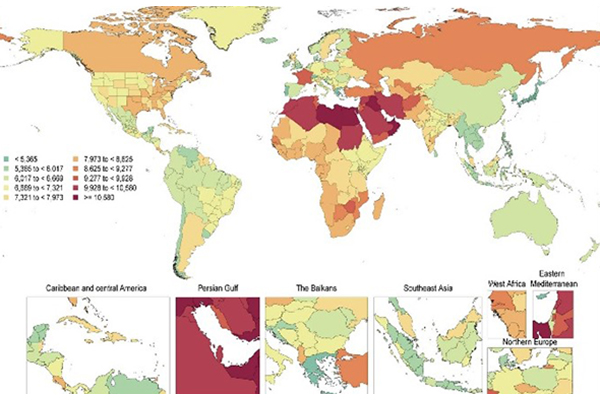
Figure A. Source: Data from the GBD Study, Institute for Health Metrics and Evaluation.
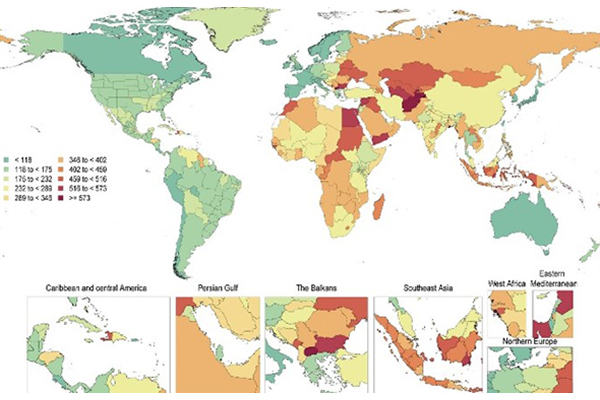
Figure B. Data courtesy of the GBD Study. Institute for Health Metrics and Evaluation.
Figure A shows the age-standardized global prevalence rates of cardiovascular diseases (CVDs) per 100,000 individuals in 2021, while Figure B presents the corresponding mortality rates. Figure B reveals that, while Americans face significant rates of CVD, the mortality rate is relatively low due to their affluence and access to healthcare. The same holds true for France when examining Figures A and B. Conversely, North Africa and the Persian Gulf region exhibit alarmingly high prevalence rates, which are mirrored by their mortality rates. This disparity is largely attributed to a lack of resources, including inadequate medical care and healthcare education. Cardiopulmonary diseases can be fatal and heavily rely on advanced medical technologies to detect them and save lives in time.13
The Global Burden of Disease (GBD) Study updates these health estimates annually, based on improved statistical methods and new data. Projections suggest that by 2035, 45 percent of Americans will face at least one cardiovascular issue, with the American Heart Association (AHA) predicting that costs related to CVD will rise from $555 billion in 2016 to $1.1 trillion. Risk factors such as obesity, poor diet, high blood pressure, and type 2 diabetes are increasing, and by 2035, over 123 million Americans are expected to have high blood pressure, 24 million will have coronary heart disease, and more than 11 million will have suffered a stroke.14
Prevalence: Chronic Respiratory Disease
Figure C shows the global estimated incidence and mortality of lung cancer in 2020. Chronic respiratory diseases (CRDs) were the third leading cause of death, resulting in 4 million fatalities and a prevalence of 454.6 million cases. Asthma was the most common CRD, with 262.4 million cases. Major causes of CRD- related deaths included smoking, air pollution, and occupational hazards, along with additional risk factors such as non-optimal temperatures and high body mass index.15 To reduce the burden of CRDs, particularly in low- and lower-middle-income countries, it is crucial to improve healthcare access, medical education, and implement strategies for tobacco control, air quality enhancement, and clean cooking fuels.

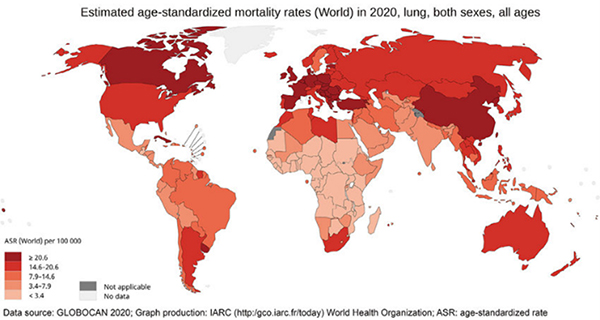
Figure C: GLOBOCAN 2020- Graph Production (WHO)
Reference :
- Oak Bend Medical Center. (2021) What is Cardiopulmonary Disease?
- UEW Healthcare. (n.d.) What Is Cardiopulmonary Disease?
- MedStar Health. (n.d.). Cardiopulmonary disease.
- Mayo Clinic. (2024) Coronary artery disease.
- U.D.MI. (n.d.). Cardiovascular disease risk.
- American Heart Association. (2024). What is an Aneurysm?
- British Heart Foundation. (2022). Arrhythmias.
- NHS. (2023). Cardiomyopathy.
- Mayo Clinic. (2024). Pericarditis.
- Cleveland Clinic. (2023). Congestive Heart Failure.
- Zimlich R. (2024). Types of Lung Disease. Verywell Health.
- Cleveland Clinic. (2022). Pneumonia.
- Vaduganathan M. et. al. (2022). The Global Burden of Cardiovascular Diseases and Risk A Compass for Future Health. Journal of The American College of Cardiology, Vol. 80, No. 25, 2361-71
- Healthline. (2023). Why heart disease is on the rise in America?
- Momtazmanesh, S. et al. (2023). Global burden of chronic respiratory diseases and risk factors, 1990- 2019: an update from the global burden disease study 2019. eClinicalMedicine, Volume 59, 101936